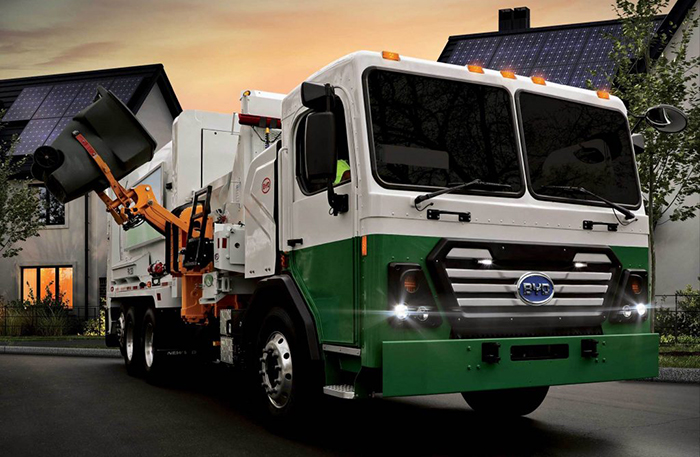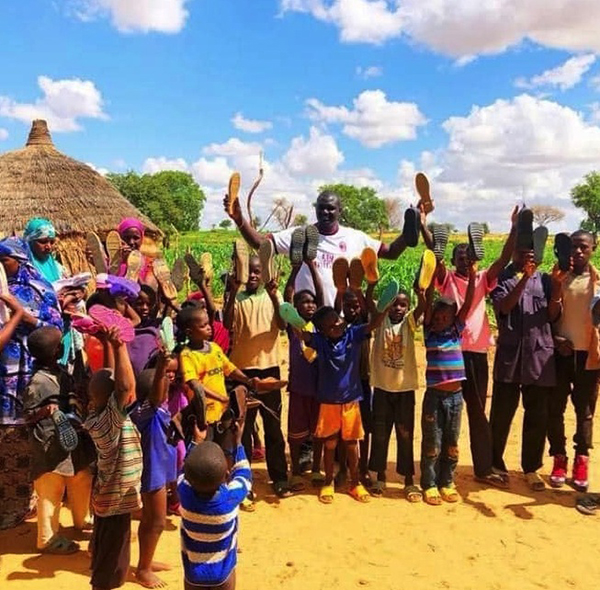MAKING A DIFFERENCE
The mission of the Coalition for Clean Air is to protect public health, improve air quality and prevent climate change.
Those are no small challenges. The coalition has been working on those goals since 1971, approaching its work through policy advocacy, education and behavior change.
“We are an advocacy organization,” said Chris Chavez, the organization’s deputy policy director. “We work with legislators, local officials, and the governor’s office. In 2019 our priority was getting SB 210 by [state Sen.] Connie Leyva passed. It passed.
“It requires the state to develop a big rigs truck smog check program. All they have to pass is not putting out black smoke, which is a visual test. It’s about not seeing black smoke out of the exhaust pipe. It’s like what we do with our cars.”
Unfortunately, statistics show Los Angeles still ranks as the dirtiest city by ozone in the entire country.
“That comes from the American Lung Association’s State of the Air Report,” Chavez said. “The L.A. region is toward the top of the list for particulate matter. We have some challenges. We have to work harder on that.
“What it comes down to is that our air quality problems are so severe … that more needs to be demanded. The big thing is making sure your elected officials know this is something that is important to you. It’s not a Republican or Democrat issue. It affects everybody.”
The notion of clean air may escape some people, especially those living in California, but not members of the Coalition for Clean Air.
“Ideally, the only thing we should be breathing is air,” Chavez said. “If we clean up the air, it will help us in the fight against climate change. There are national and state standards that need to be met when it comes to our air. Right now the South Coast Air Basin, the urban parts, do not meet the national or state standards. It’s so dirty, it violates the law.”
Most parts of Southern California are in a 10,000 square mile area called the South Coast Air Basin.
Chavez, 32, said the area includes urban parts of Los Angeles, Orange County, Riverside and San Bernardino counties.
Unfortunately, people living in the area are exposed to some of the poorest air quality in the nation.
Reasons the air is so bad is due to it being home to two of the busiest ports (Los Angeles and Long Beach) in the U.S. It is also the area in the second most populated area in the U.S. with nearly 17 million people, which leads to a lot of car exhaust.
Surprisingly, the abundance of sunshine is also a culprit. The area gets more sunlight than most other urban areas, which causes the formation of air pollutants in the atmosphere.
“Communities of color and low-income communities are disproportionately affected,” Chavez said. “They are all along major goods corridors. They are called Frontline Communities. On the [Lomg Beach] 710 Freeway, the number of trucks is higher when compared to other freeways. There are communities living along the Alameda Corridor, the rail corridor where there is the movement of goods from the warehouses. The global economy is being subsidized by those communities.”
While there is work to be done, when it comes to cleaning the air, Chavez points out that things are better than they used to be.
“There has been a 70% reduction in smog in the Los Angeles area since 1980,” Chavez said. “Our air is relatively cleaner than it was 10, 20, or even 30 years ago. Progress is being made. There are a lot of different challenges.
“When it comes to geography, as a basin we are surrounded by all sides by mountains. It’s harder for clean air to get in and dirty air to get out. The area is transportation dependent, which is the biggest source of bad air.”
Air pollution is everyone’s problem because everyone contributes to the air crisis, said Chavez, who lives in Long Beach.
“Everybody contributes to the climate crisis,” he said. “It’s important to note, however, that responsibility isn’t shared equally. Poorer countries and the people who live within them emit far less greenhouse gas emissions than those living in industrialized, developed nations.
“It would be completely unfair to hold those living at subsistence levels or in extreme poverty as equally responsible to your average U.S. citizen.”
The bottom line is that air pollution is not good for the human body. It’s been reported that there are 19,000 premature deaths related to air pollution in California every year.
“It really depends on the air pollutants,” said Chavez, who has suffered from asthma. “Smog causes irritation in the lungs. Lung tissue becomes inflamed, asthma is triggered more easily, air toxins like diesel exhaust and lead, those pollutants can cause cancer and other major health problems.”
The million-dollar question is the effect, if any, COVID-19 has on clean air. The virus indirectly threatens clean transportation. It’s been called both a threat and an opportunity for clean transportation.
“The indirect threat is coming from the recession we’re in,” Chavez said. “Ultimately, the state budget includes allocations of funding for clean transportation projects. Because there is less funding, those projects face huge budget cuts.
“The electric vehicle rebates to incentivize purchases, some of those programs are under threat because of the reduced amount of funding. What we’re saying is that this is an opportunity to push for more — steer our economy toward clean transportation and it will decrease air pollution. We need to invest in clean transportation and a clean economy.”
At the beginning of the COVID crisis in March, Chavez said the area had “very clean air.”
“In part, some benefits have been from people driving less and having to shelter in place,” he said. “A big factor was the weather at that time. Stormy weather leads to cleaner air. With the rain ending, and more people driving, it’s coming back up.
“The clean air effect in March and April is waning. The increase is due, in part, to warmer temperatures, which helps accelerate chemical reactions in the air.”
According to the Coalition for Clean Air, air pollution has long been linked to a greater risk of respiratory infection, which in turn leads to more susceptibility to disease. That means the virus could be more damaging to people who have lived, worked and played in polluted areas, because their lungs may already be impaired and their defenses weakened.
Chavez warned that when it comes to clean air, there are other factors at play.
“A facet that is not really being looked at is that communities where there is pollution, there is a link of the severity of the air they breathe,” Chavez said. “If you breathe dirty air you may be at more risk of COVID symptoms ultimately. Air pollution damages the body’s symptoms and makes it harder to fight off infection.”
But all is not lost when it comes to clean air.
“The biggest challenge I want people to know about air pollution is that there is something they can do,” he said. “They have the opportunity to demand change for their communities. It’s hidden in front of you how polluted it is. Constituents have to go to elected officials and demand action and incentives to demand clean air.”
Chavez said the time to clear the air is Oct. 7. That’s the day he said everyone can be a part of the clean air effort by participating in the third annual California Clean Air Day, which encourages individuals, businesses, and government agencies to pledge to do at least one thing for clean air that day.
By Darlene Donloe
Contributing Writer












